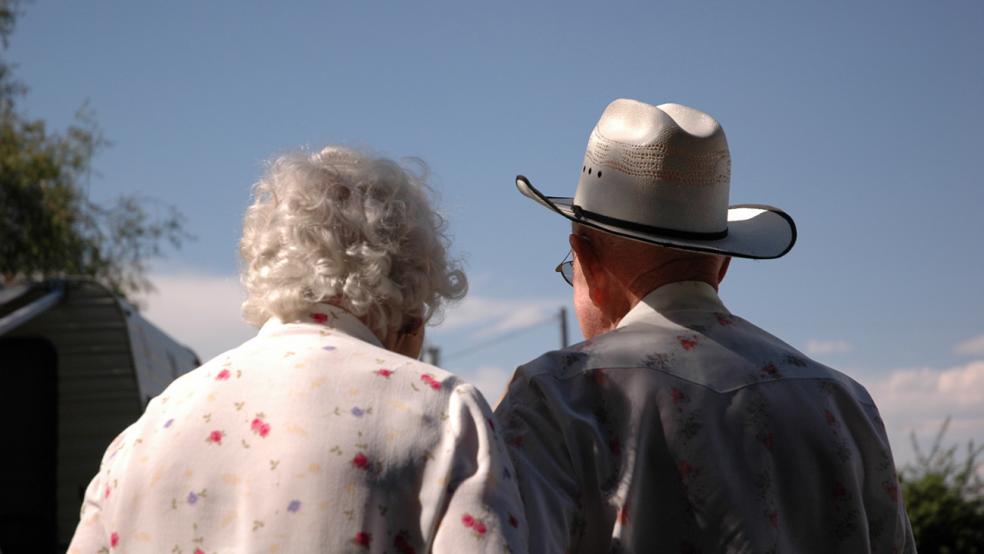Big Sur, California, is a long way from Washington, D.C. And the 3,000 miles between the two is reflected in very different views of the future of aging in America.
On the West Coast, the prestigious Esalen Institute has given its annual prize for “leadership in the field of human potential” to Ken and Maddy Dychtwald, leaders of Age Wave, an organization that has helped shape our understanding of how the marketplace is being transformed by aging populations. The Dychtwalds were chosen for the prize because of their “profound contribution to changing the way we think about aging and to shaping how societies worldwide can best handle the challenges and opportunities ahead.” Esalen is exactly right.
Back on the East Coast, both Republicans and Democrats are intensifying their arguments over the future of Obamacare, while largely overlooking the question of “human potential.” Worse, both sides of the aisle ignore the opportunities associated with a dramatically aging population. Instead of finding ways that aging can jumpstart economic growth, Washington is sparring over how to best cut corners and wring dollars out of pharmaceutical companies. This is not a long-term solution for an America that will soon have 75 million people over the age of 60.
Related: How Social Security Lifts People Out of Poverty, State by State
On many levels, Big Sur is outpacing Washington.
Consider the merit of the Esalen Prize. It was created in 2012 to recognize innovations that push “human potential” to new bounds. The prize cuts across disciplines, and includes in its purview quantum physics, economics, citizen diplomacy, as well as spirituality, psychology and the creative arts. But even with this broad lens, it is a terrific surprise to see recognition for the Dychtwalds and their work on aging populations.
It is immensely important that population aging has been attached to a prize that is fundamentally about human potential. For no matter what the stiff-collars in Washington insist, aging is a question of potential. It’s not a question just about how to care for more old people; nor a question about paying for “entitlement;” nor even a question about the “gray ceiling” in the workplace that stunts the career progression of Millennials and Gen Xers. Aging is, most fundamentally and most importantly, about human potential.
That’s what the Esalen Prize gets right; and it’s what’s missing from the cantankerous debates embroiling Washington.
A case in point is the third debate between Ms. Clinton and Mr. Trump. When moderator Chris Wallace asked the candidates about the sustainability of Medicare, Mr. Trump answered by blasting Obamacare. To wit: “One thing we have to do is repeal and replace the disaster known as Obamacare … It is probably going to die of its own weight, but Obamacare has to go.”
Related: The Simple Reason So Many Americans Are Opting Out of Obamacare
Ms. Clinton’s response edged closer to what Mr. Wallace was asking: “We’ve got to go after the long-term health care drivers. We’ve got to get costs down, increase value and emphasize wellness … [that will] get spending under control but with more resources and smarter decisions.”
Yes, but that’s not quite satisfying. Her answer regurgitates the most banal platitudes and offers little insight into how we can better allocate resources and improve decision-making. It also overlooks completely the question of human potential that the Esalen Institute understood in its award to the Dychtwalds.
One of the most important ways to keep costs down – and “save” Obamacare, if that’s your fancy – is also a solution that taps into the vast human potential of older adults: in-home caregiving. In-home care not only cuts back on government spending dramatically, but creates a new service industry where older Americans can work and thrive in their later years. The benefits of in-home care are worth looking at more closely.
First, the benefit of savings: A report by the Home Care Association of America finds that the median annual cost of in-home care is approximately $45,000 for an average of 44 hours of care per week. That’s less than half the cost of a room in a private nursing home, which runs an average of $91,250. Given that more than 60 percent of the national bill for nursing homes is footed by Medicare and other sources of public funding, the U.S. could save billions by moving to home-based care.
Related: How to Live Better as More of Us Live Longer
Second, the benefit of human potential: The home care industry creates jobs that fit older adults. These jobs suit those who are looking for “second acts” or “encore careers,” and they also suit older adults who have had to change careers because they can no longer meet the demands of their former professions.
Historically, our society has promoted this idea of “retirement,” where someone walks away from a life-long career at age 55 or 60 with a gold watch and a pension. That model is no longer economically feasible or socially desirable. When many of us can expect to celebrate our 90th birthdays, a three and four-decade retirement saps individuals, families and societies. New jobs in home care help fill that gap. It creates opportunities for older adults to realize their human potential and to help others live out their lives with dignity and peace, all while saving federal money.
Here in the fall of 2016, it’s all too easy to poke fun of Washington elites, and to bemoan the bedraggled election cycle that has left most of us feeling nauseous. But it’s also worth reminding Beltway insiders that good ideas are worth pursuing. In this case, Big Sur can teach Washington a lesson.






